Copenhagen Has Quietly Become a Pizza and Ramen Paradise
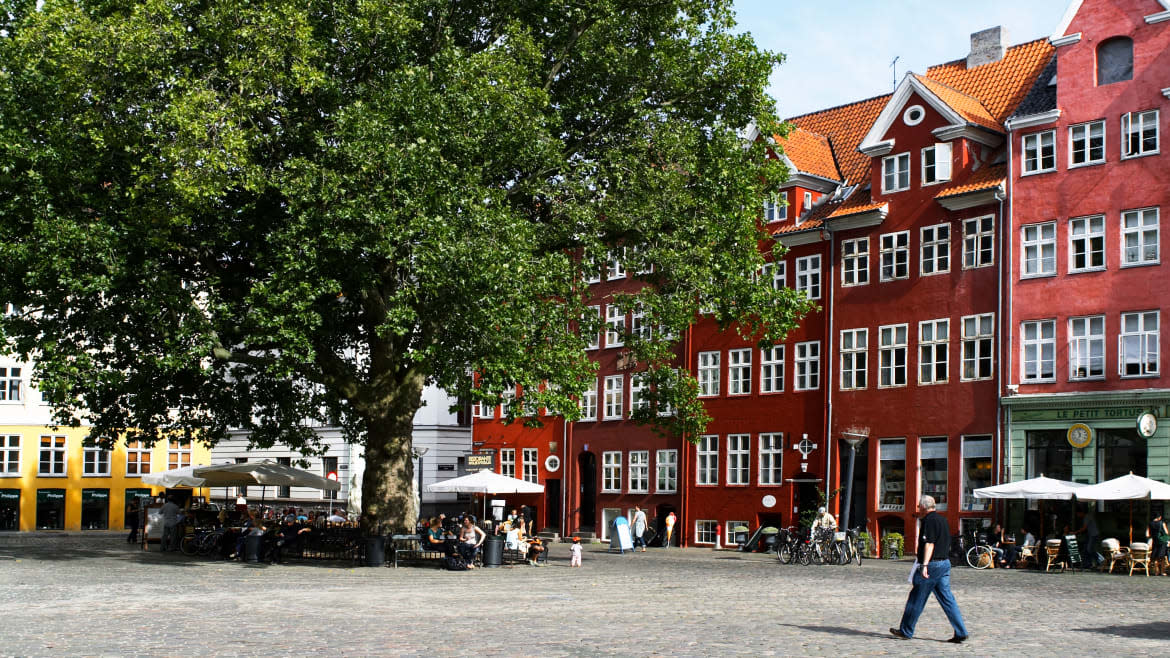
When you think of food in Copenhagen, you likely think of things like smørrebrød sandwiches, pickled herring, Michelin-starred gods like Noma, and the hygge-loving pioneers of “New Nordic” cuisine.
The Danish capital has, indeed, become celebrated among the international culinary community thanks to a movement focused on innovative cooking, seasonality, and a dedication to ethical practices. And when I first visited Denmark in 2022, I reported on the massive network of Noma alumni who’d taken over the city’s cuisine at every level—from upscale tasting-menu spots to hamburger shops to bakeries to seafood bars.
But within an hour of exploring the city, something struck me as peculiar: There are so many friggin’ pizza joints.
It really was astounding—and I say that as a native New Yorker, where it can sometimes feel like there’s a 1:1 ratio of pizzerias to humans. Yes, pizza is an internationally beloved comfort food, and yes, pizza has long existed in the Nordics (Norway is obsessed with a frozen pizza brand only half-jokingly deemed the country’s national dish). But still I did not expect to see this many pizzerias in Denmark, a country long known for its culinary staples of rye bread, fish, and root vegetables.
I asked bartenders and kitchen staff about it, hoping they’d tell me I was wrong, that there’s nothing remarkable about the abundance of pizza joints in town. But they confirmed my view. As Copenhagen’s food scene has grown into an world-famous hotbed of innovation and experimentation, pizza has exploded. I’d thought about this for almost a year, hoping to return and get a better understanding of why. And so, with assistance from Copenhagen’s tourism bureau, I went back this summer to get a taste.
It doesn’t take much digging on the Copenhagen pizza scene to realize that, generally speaking, Bæst has long been at the center. Since opening in 2014 as the city’s first upmarket pizzeria, this brick-oven spot in the uber-cool Nørrebro neighborhood has embodied the way Italian chefs have merged their roots with Danish ingredients and the values of New Nordic cuisine: locality, seasonality, and sustainability.
Of course, that’s no surprise, given the restaurant is helmed by Christian Puglisi, a former Noma sous-chef who’s become a local celebrity chef in his own right. The restaurant has been named No. 2 on Europe’s 50 Top Pizza spots outside Italy thanks to its immensely popular sourdough pies that feature both traditional Neapolitan toppings and more seasonal Danish ingredients like brussels sprouts. Upstairs, fresh mozzarella (a rarity in Denmark), ricotta, and stracciatella are hand-pulled in a corner workshop while the house sausages are butchered and cured in another. As such, do not miss the pie with smoked mozz and spicy nduja sausage to get a taste of the in-house magic.
Much like how Noma churned out a wave of former staffers who took over Copenhagen’s food scene, from high-end joints to pizzerias to bakeries to taco stands, Bæst has seen its alumni fan out across the city to build out their own pizza fantasies.
Across town in the up-and-coming Carlsberg district, Sicilian pizzaiolo Giuseppe Oliva, who developed the Bæst pizza recipe, opened Surt (Danish for “sour”) in 2019, specializing in Neapolitan sourdough pies that are airy, crispy, and decidedly heavy in flavor. Oliva’s background is fascinating: His family in Sicily has been in the bread business for nearly a century, but he instead chose a life at sea, working on oil tankers and merchant boats before landing in Copenhagen and turning to the skills he learned as a kid to make pizza.
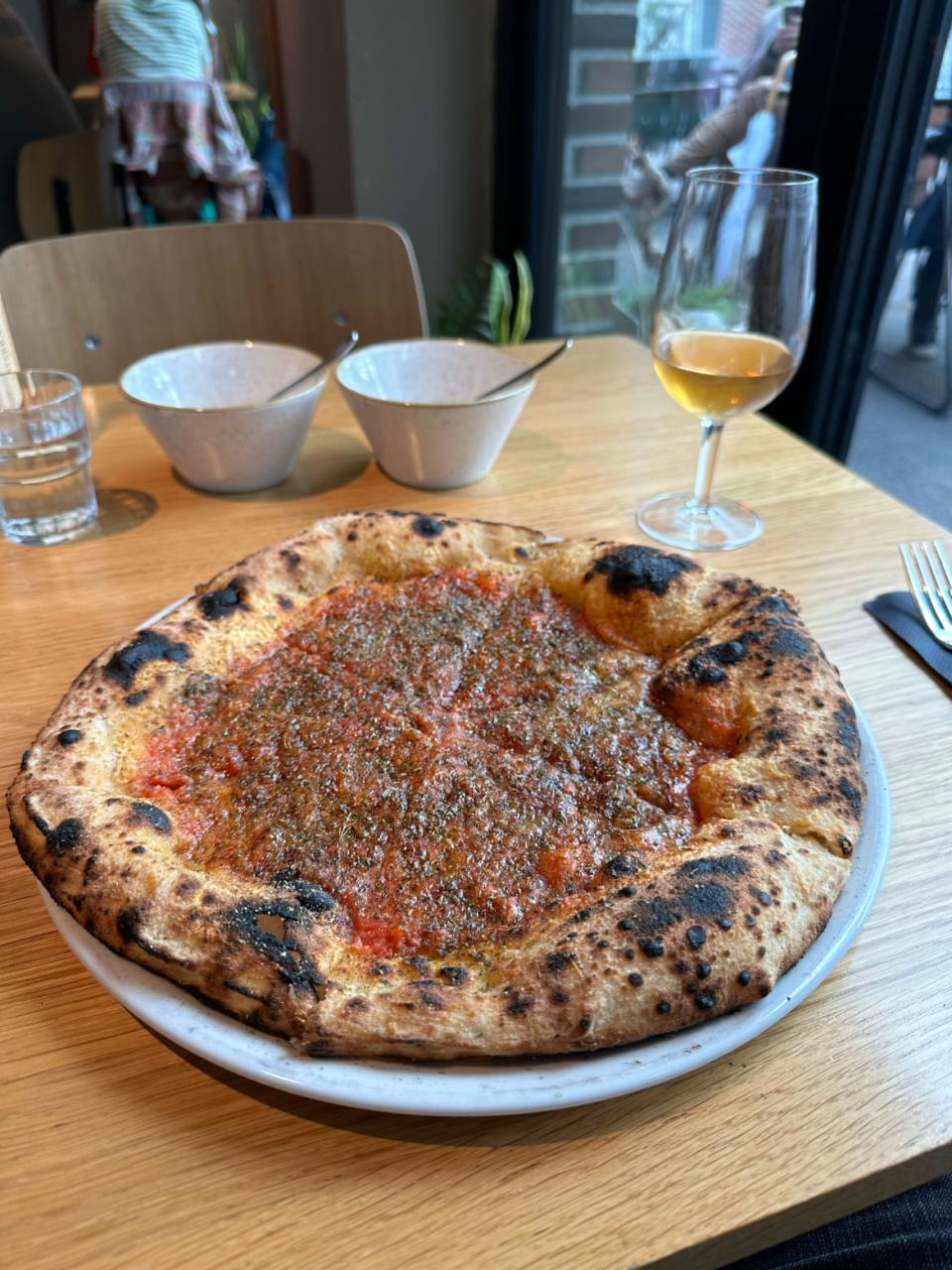
The Rianata pie at Surt in Copenhagen.
After just a few minutes of chatting with him, it’s clear Oliva is dedicated to his craft at every level. He built the restaurant’s tile brick oven by hand. He is immensely proud of Surt’s house fermentation, which gives the pies a more acidic flavor than you’d expect (in a good way), and he collaborated with Carlsberg brewery on a brew using the pizzeria’s yeast. His wine list is a thoughtful curation, so much that he opened Lĭquo, a quirky and modern wine bar around the corner showcasing his homeland even further. Similarly, the Surt pizza menu feels like a meticulous tribute to the specialty pies of home.
The house marinara pie is considered by some to be the best pizza in town (I’ll let locals debate the superlatives), but I can say that my personal favorite was the Rianata, a pie of Sicilian origin starring the usual robust tomato sauce and cheese (pecorino, in this case) but with a deeply salty, umami anchovy paste as the base. It’s not for everyone, Oliva cautioned, but real heads know. Like Bæst, Surt was honored this year as one of Europe’s 50 Top Pizza spots, coming in at no. 20.
Meanwhile, in fall 2022, Bæst’s former head chef Jan Kopacz opened Diamond Slice, a low-fuss spot boasting Copenhagen's very own New York-style slice. With an eclectic energy and focus on unusual toppings—one slice features sweet corn and BBQ mushrooms, another spins the controversial Hawaiian slice by adding fermented pineapple and pickled jalapeños—this joint near the city’s famed lakes actually reminded me of Vinnie’s slice shop in Williamsburg, Brooklyn.
I especially loved the “Surf ’n’ Turf” slice—pepperoni, anchovies, garlic oil, and pecorino—but the house slice with cheese, basil, and tomato sauce was awesome too. As for whether these slices felt like home for me, a native New Yorker, well… maybe not so much. The undercarriage was a bit fluffy and focaccia-like in texture, unlike the traditionally thin and chewy version I know and love. But we’re in Copenhagen, not Brooklyn—I’m not expecting a literal New York slice, but rather a truly enjoyable Danish remix of the real deal.

Three pizza slices at Diamond Slice.
Outside of the Bæst alumni network, the number of pizza offerings around town is staggering. Pizzeria Luca, which came in at no. 23 on the 50 Top Pizza list, offers what I found to be a delightfully chewy and char-crusted Neapolitan pie in a candlelit subterranean eatery near the center of Copenhagen’s most touristy district. Further inland, there’s Tribeca Beer & Pizza (where Oliva used to make pizza), which bills itself as Ugly Duck Brewing Co.’s “laboratory” for barrel-aged beers and stone-oven pies.
With just one quick stroll through the ultra-hip Nørrebro, you’d come away thinking pizza is a Danish staple. There’s Neighbourhood, which serves pizza in perhaps its most Danish form: with hearty salads and fresh veggies like pickled beetroot and smoked potatoes stacked on top. Nearby there are also Stefanos, Pow Vegan, Nino’s, and Pico, which slings a trio of mini sourdoughs of your choosing—perfect for people who can’t settle on one pizza. Around the corner, a (“temporarily closed”) Roman-style slice shop called Gola gives away the game with its interior painted mural blaring “Prisoner of the Pizza.” And, of course, dotted throughout the neighborhood are some jankier-looking shops that would definitely be a treasure after a night of heavy drinking. All of these shops, mind you, are located within a slice of Copenhagen slightly larger than Times Square.
Beyond pizzerias, the influx of chefs and restaurateurs from Italy has resulted in a boom in osterias that ooze both Italian tradition and Danish experimentation. In the center of town, there’s Barabba, a Michelin-starred “contemporary Italian” wine bar with Danish twists like seaweed tiramisu, reputedly popular with restaurant workers around town but sadly closed for holiday while I was in town.
Back in Nørrebro, on the Jægersborggade, a mega-cool cobblestone block once considered among the city’s dodgiest, Naples-born Davide Laudato (a former Bæst chef) recently opened Topicàl, a tasting menu focused on some of the more unusual flavors in traditional Italian fare. While not vegetarian, the restaurant has a “veggie mentality,” said Laudato, a relentless experimenter who makes all of his pastas, house snacks, and even limoncello by hand. (His recently reworked menu won a very public endorsement from Puglisi.)
And right next door to Bæst, Puglisi has turned his old bakery space into Mirabelle Spiserìa, an all-day Sicilian eatery perfect for day drinking-and-snacking with a superb amara liqueur served with tonic and olive oil, an unreal good anchovy salad, and some unusual arancinis with local, seasonal ingredients including pistachios and oxtail.
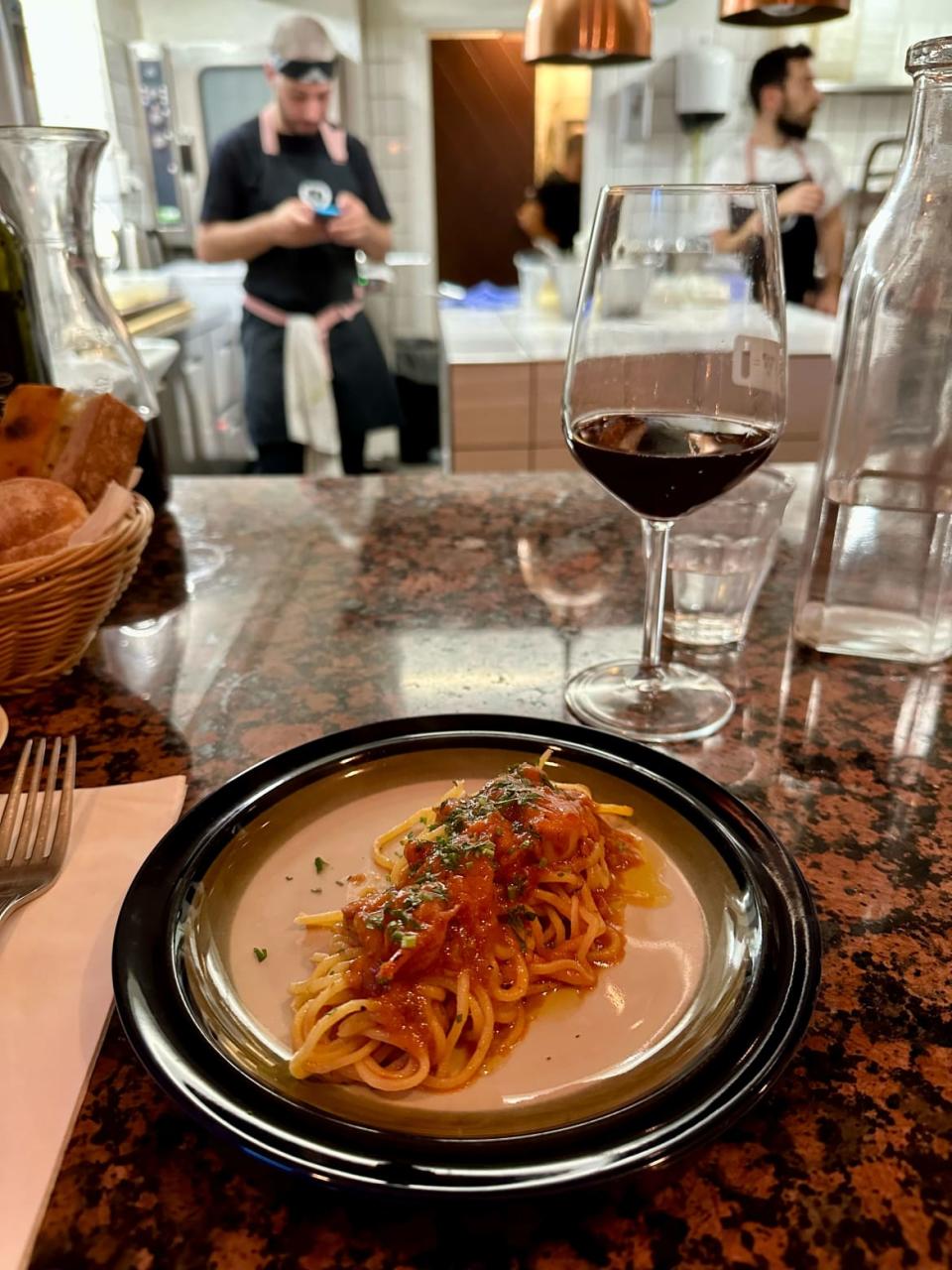
Octopus ragù over spaghetti at Rufino in Copenhagen.
My favorite of the osterias was Rufino, a cozy eatery near the canals that effortlessly churns out an intimate meal, with homemade pasta, time-honored Italian recipes, Danish ingredients, and a wine-pairing program that’ll knock you on your ass. I sat at the kitchen counter and watched, perhaps a bit tipsily, as the staff—almost entirely Italian, from Venice to Naples to Sicily—paid intense attention to every detail of the dishes: A housemade stracciatella with leeks was an unbelievable mix of milky, salty, sour, and nutty; a Tuscan-style tomato salad with grilled mackerel that was delicate before hitting you with a pleasantly bold fish flavor; and a braised octopus ragù that had me swearing off any pork or beef variations going forward.
Copenhagen may quietly be a pizza paradise, but here’s another surprising fact about the city’s ever-evolving food scene: There’s a so-called “new Asian wave” happening, making this Nordic capital a great city to also enjoy—checks notes—ramen, sushi, Korean fried chicken, and izakaya bites.
A key player in that movement is Jatak (Danish for “yes, please”), a pan-Asian tasting menu from Jonathan Tam, a former sous-chef at Relæ (oh, look, yet another Puglisi connection). The standard talking point is that Jatak is so damn good it was awarded a Michelin star within six months of opening. And I can confirm it really is a stellar meal.
The two words “tasting menu” often provoke intense skepticism in me. Yes, I often write about food, and I’ll happily try anything on my plate. But my tastes often lean to “no frills” and I am neurotic—and thus wary of putting my trust into a chef for a prolonged multi-course meal, especially at the typical price point.
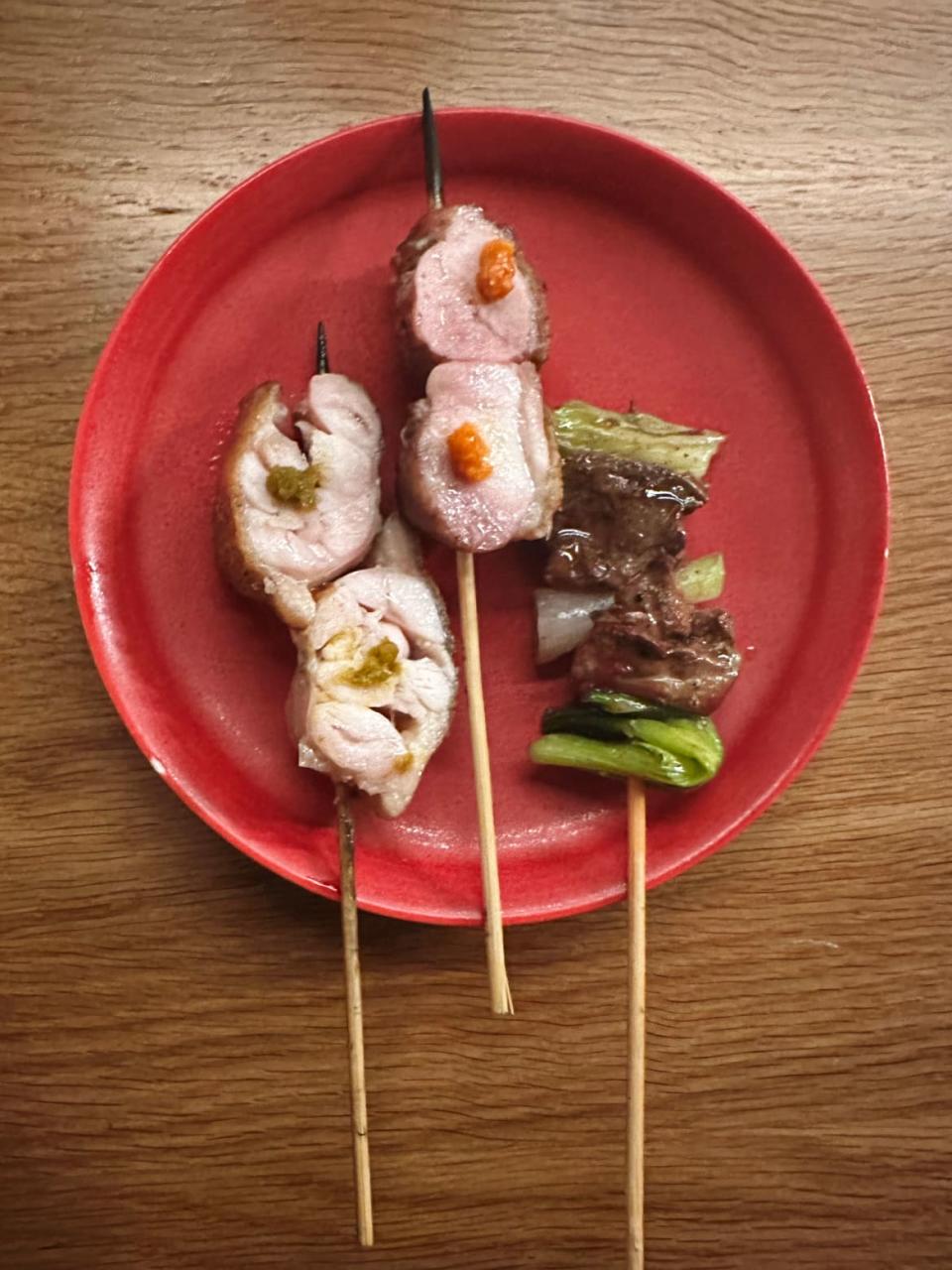
Perfectly cooked chicken skewers at Jatak in Copenhagen.
But Jatak was a marvel. Right off the bat, item No. 1, something as simple as sliced cucumber with shiso leaf and cashew paste drove me to text my wife “wtf wow.” Other dishes elicited similar responses: a juicy mackerel garnished with tingly Sichuan peppercorns; grilled lobster tail served with Mandarin-style pancakes and a loquat-based sauce, and the claw over rice with marigold; and chicken from a family-run organic farm in southwestern Denmark, prepared three different ways, including poached Hainanese-style and—my absolute favorite—grilled over charcoal with a dab of yuzu koshō, Japanese yakitori-style. Tam and his team work in quiet precision, well worth the price of entry (roughly $140) to sit at the counter.
Over in Vesterbro, Copenhagen got its first true sake bar in Jah Izakaya, where Japanese chefs cook up the classic gastropub comfort foods of an izakaya while incorporating locally grown Danish ingredients into an ever-changing seasonal menu. In addition to the usual Japanese pub fare like sashimi and grilled squid, I especially loved one seasonal item: whole baby corn fried to a crisp in tempura batter. The silk of a corn husk is usually what you work hard to remove, but here its the star of the show, taking on a chip-like texture with a very clear sweetness. I’ve been thinking about it ever since.
Elsewhere in town, upscale Asian cuisine abounds. For Japanese-Danish fusion and high-end sushi there’s Kappo Andō, Gaijin, and the design-forward Levi. For similarly upmarket Korean fare, there’s two-star Michelin restaurant Koan and Bib Gourmand awardee Juju.
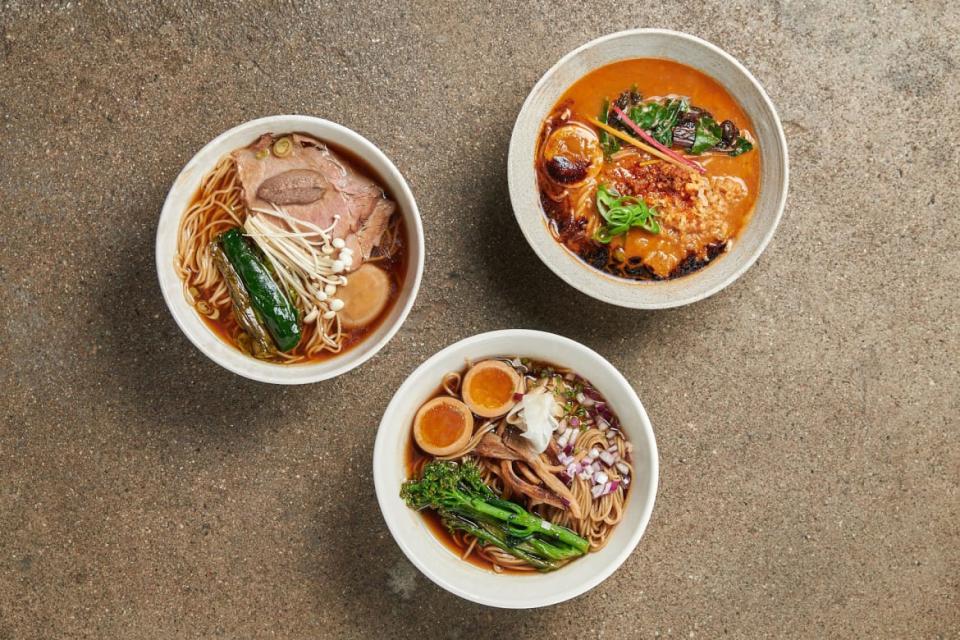
The ramen on offer at Slurp.
But for a simple bowl of ramen, Copenhagen has some seriously great options. Danish craft beer empire Mikkeller opened Ramen to Biiru (Japanese for “ramen and beer”) and has since opened five new locations, including one in Copenhagen’s international airport. And with two locations in town, Slurp Ramen Joint appears to be coming for the crown. I tasted their ramen at their newest location, housed inside Japanese eatery Kōnā and served at a u-shaped bar with minimalist decor. The house special broth, an nduja miso with some anchovy and lemon, was funky and provocative, but the chicken-based shoyu broth was the type of comfort soup you write home about—on par with the best shoyu I’ve had at least in New York. And the Danish influence is on full display in dishes like the sashimi starter, which turned me on to pickled samphire, a salty, crispy saltwater green harvested on the west coast of the Jutland.
On my final night in town, knowing I’d be out late carousing (as one does), I was especially excited to try Propaganda, a funky and unabashedly loud wine bar and Korean gastropub run by Youra Kim, a South Korean chef and former Noma intern, and Riccardo Macron, the man behind Barabba. It’s a casual joint with an open kitchen and a raucous playlist of Whitney Houston, Elton John, and Spanish pop icons Baccara. Between generous pours of sesame oil-infused negronis, I pigged out on K-Town late-night staples like a cold noodles with peanut sauce, Korean kalbi-style short ribs with tomato kimchi, and, the prized item of the night: Korean fried chicken.
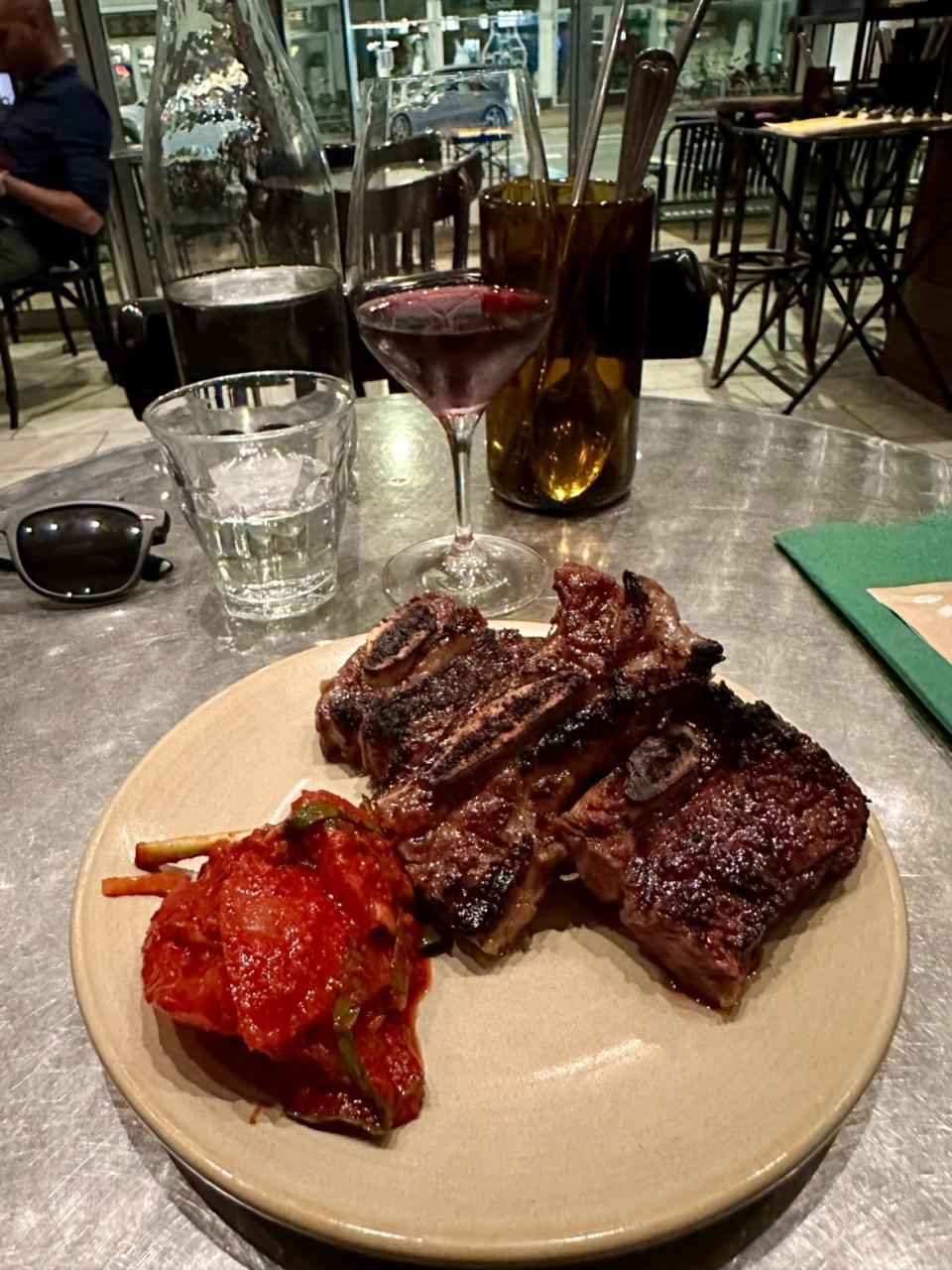
Kalbi beef ribs at Propaganda Kitchen & Wine.
Groups can order the chicken fried whole, the smell of hot oil, garlic, and gochujang wafting throughout the small restaurant the second Kim tosses the bird in the fryer. But because I dined alone, I ordered it sando-style, wedged between two fluffy slices of milk bread and lathered with a purple cabbage slaw. After a few bites, I instantly regretted not ordering the whole chicken. Why not, right?
Later that evening, after shutting down Balderdash, my favorite cocktail bar in town, and indulging in far too many shots with the after-closing crowd, I stumbled out onto the street at 5 a.m., my flight home to NYC boarding in just four hours.
As I walked back to my hotel, in need of more food to sop up the booze, I remembered the 7-Eleven near Nørreport Station and how they had small cheese pizzas on the hot rollers.
For a moment, I thought, Hey, if they do literally every other type of food so well here, why not shitty convenience store pizza? Luckily, I thought better of it.
Get the Daily Beast's biggest scoops and scandals delivered right to your inbox. Sign up now.
Stay informed and gain unlimited access to the Daily Beast's unmatched reporting. Subscribe now.


